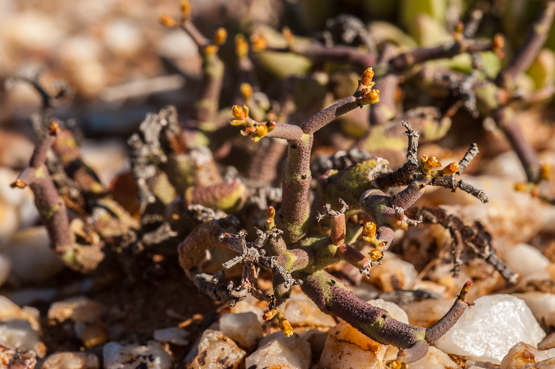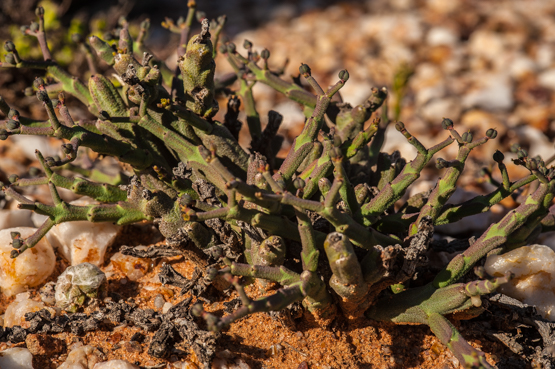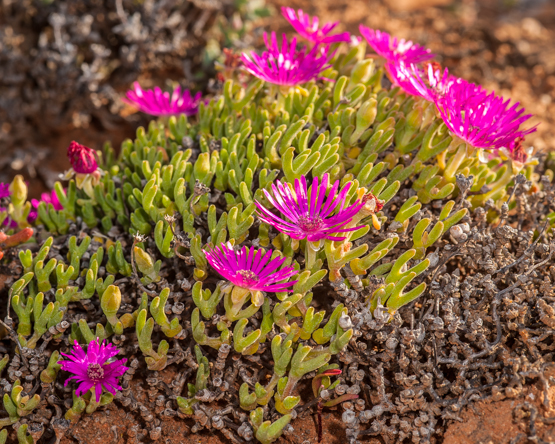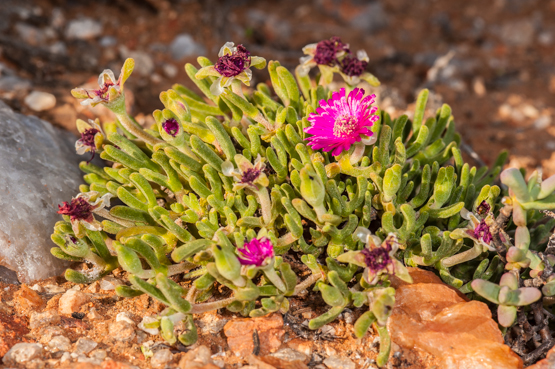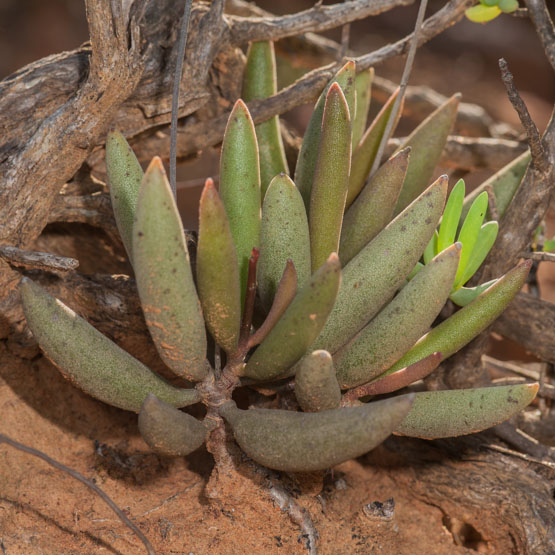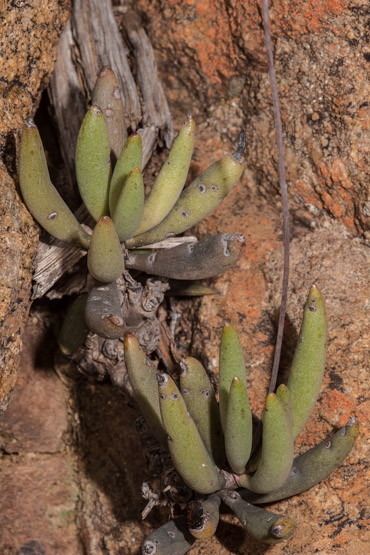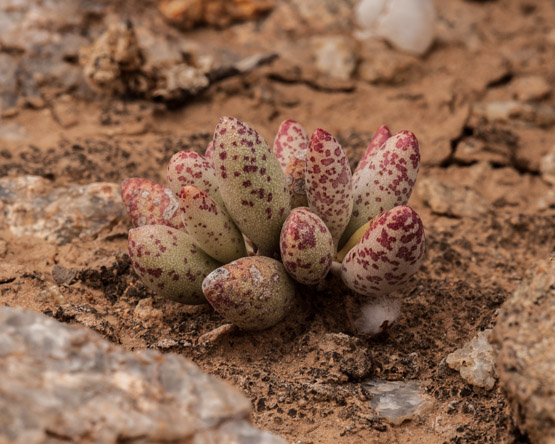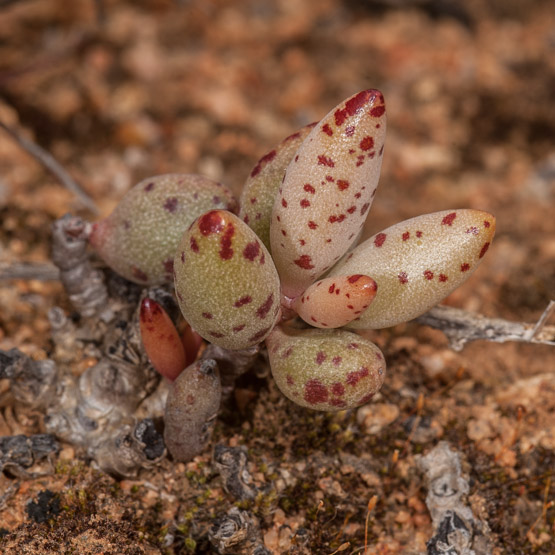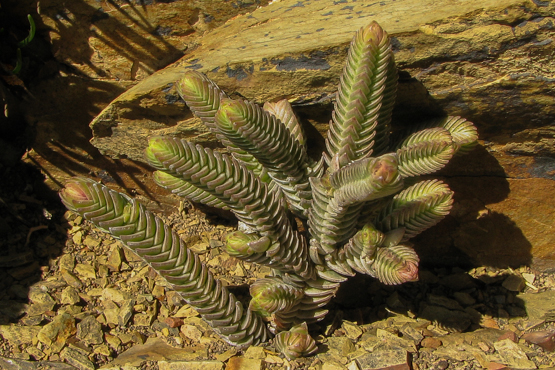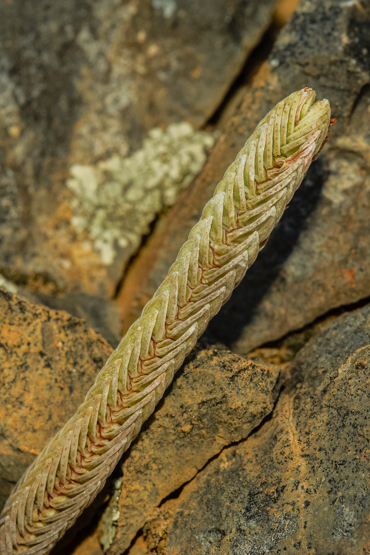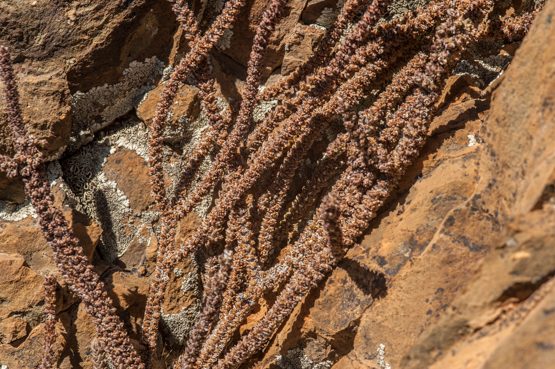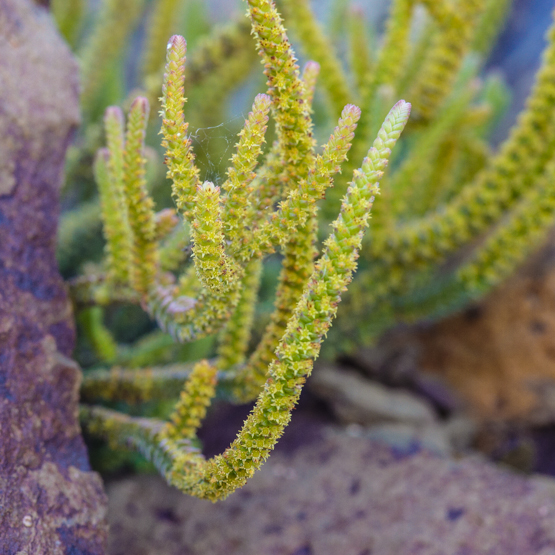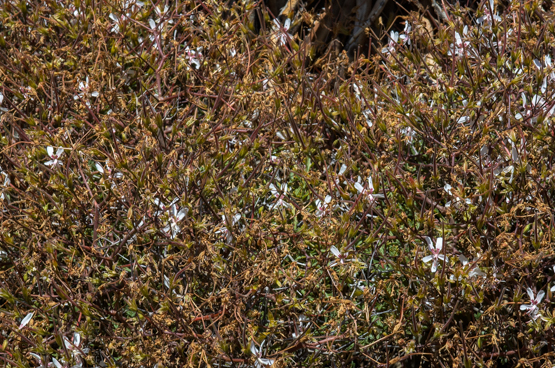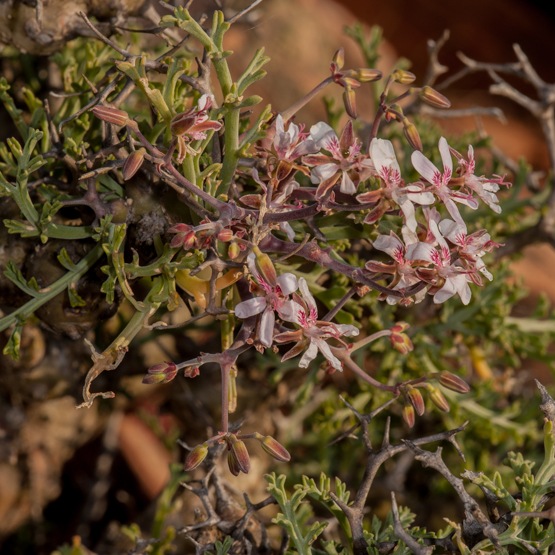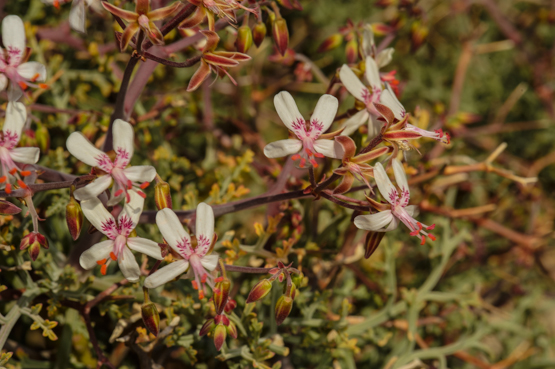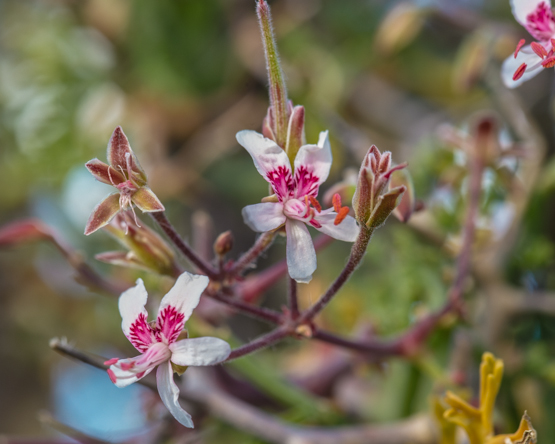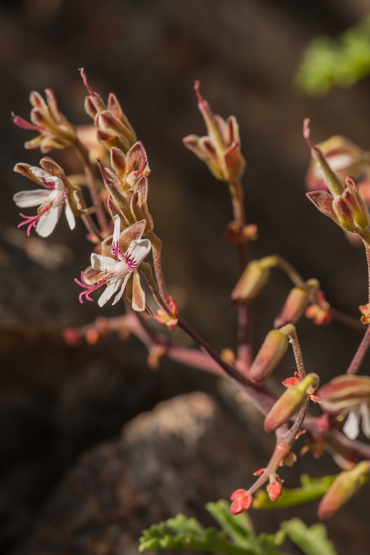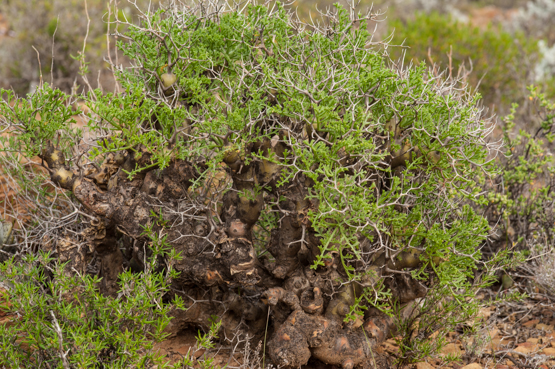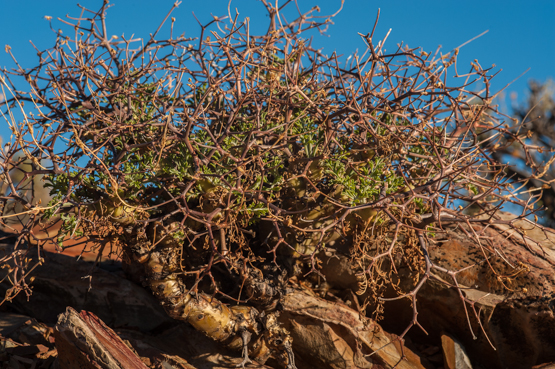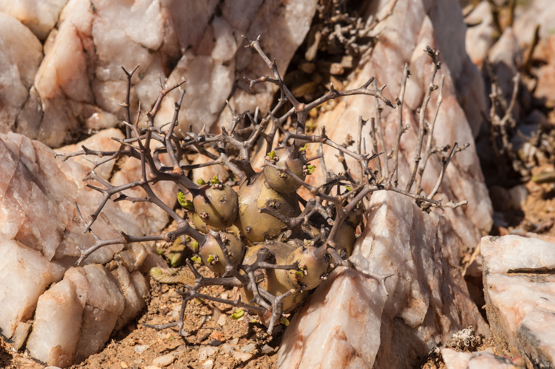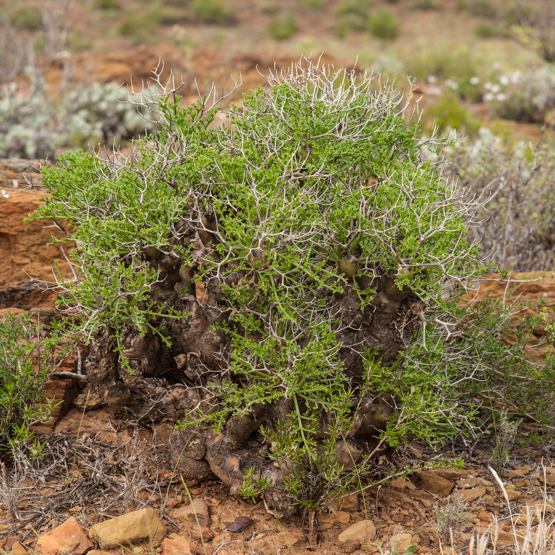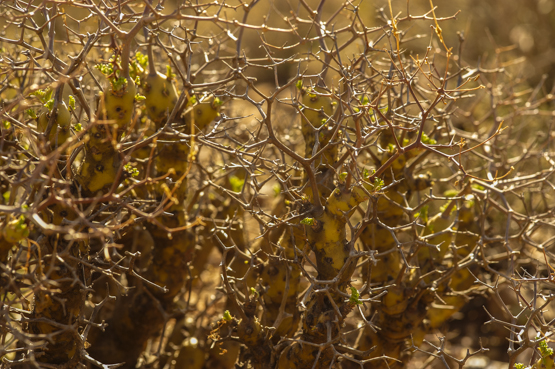E. muricata belongs to a group of spineless, shrubby Euphorbias which are often difficult to tell apart. This species however, is distinctive because of the rough surface of the branches.
The plants reach a height of up to 60 cm and occur from the Knersvlakte to Calvinia on gentle slopes and loamy flats.
Photos taken on the Knersvlakte 1 Sept. 2010.
Tag: Namaqualand
Monsonia (Sarcocaulon) crassicaulis, part 1
Together with M. salmoniflora this is the most common succulent Monsonia. The plants are widely distributed in the southwestern part of Namibia and the winter rainfall area of South Africa. They grow here mainly in winter from May to July and flower mostly from August to early November. The species also occurs in the summer rainfall regions of Bushmanland and the Great Karoo, where they are dormant from May to August and grow in spring and autumn. Not surprisingly one can also find them in the transitional zones between the summer and winter rainfall areas.
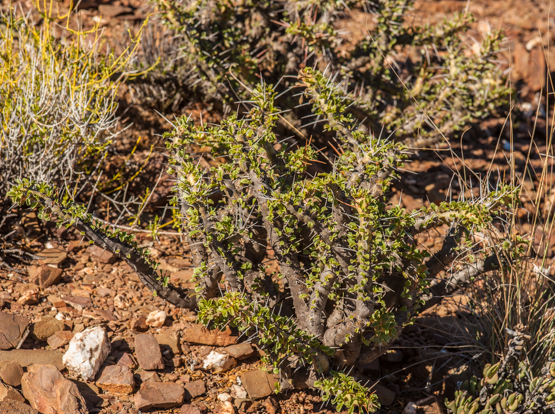
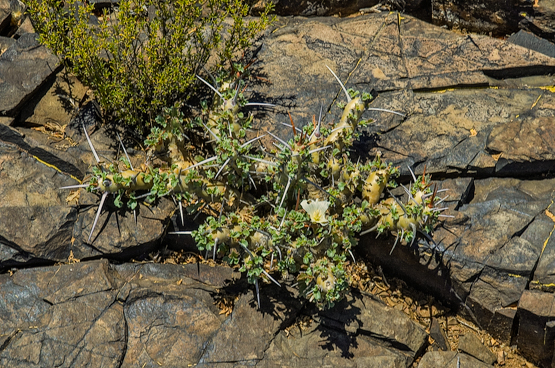
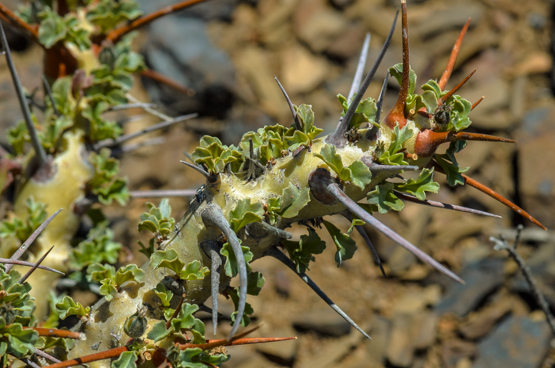
To be continued.
Mesembryanthemum (Phyllobolus) resurgens 2
The fact that this species is a deciduous geophyte is reflected in the name, as one of the meanings of the word resurgens is: “Rising again, as from the dead”.
The plants are only up to 3 cm tall, with a thick caudex covered in cork, short stems and
leaves with large bladder cells.
In June-September they produce greenish yellow to pale salmon, distinctly scented flowers about 4 cm in diameter.
If you want to see the plants in nature, you have to go to the Northern or Western Cape Province, where they are widespread in the winter rainfall area from Namaqualand to Ceres and Laingsburg.
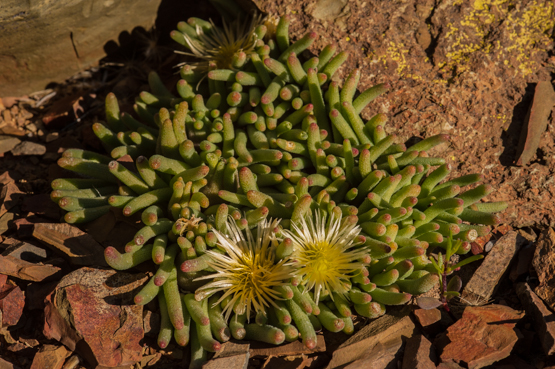
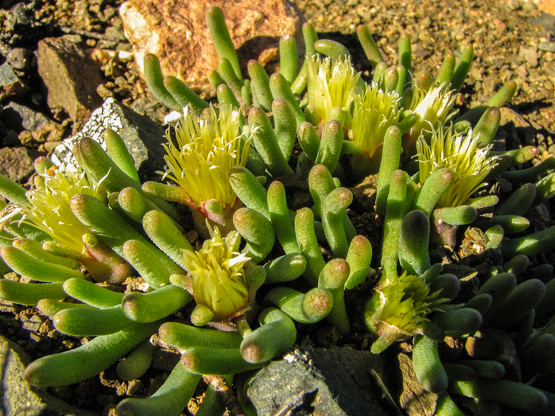
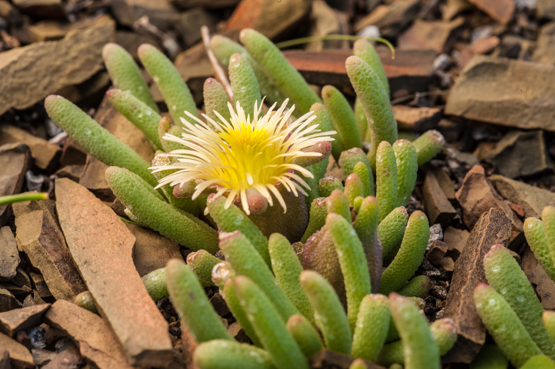
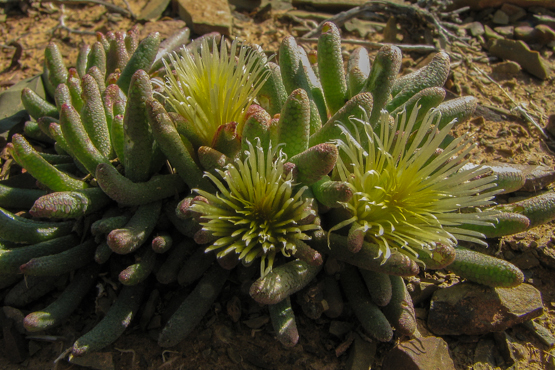
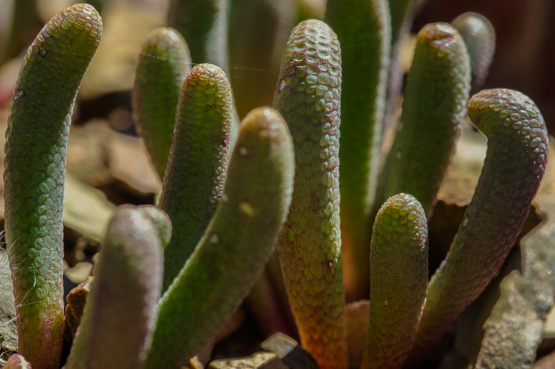
Meyerophytum meyeri
These peculiar plants produce leaves of two kinds: the first pairs of the season are egg shaped, forming a bilobed body; the second ones are much longer than wide, with the leaves free for about two thirds of their length.
The plants are cushion-shaped and up to about 30 cm in diameter. They are found from the Richtersveld to southern Namaqualand, in loamy soil, often with quartz pebbles.
The flowers appear in winter and are either dark pink throughout, or rose with a white base, or white (turning pink with age).
The first two pictures were taken 6 Sept. 2010 (look at the Crassula elegans and Conophytum saxetanum keeping the first plant company)
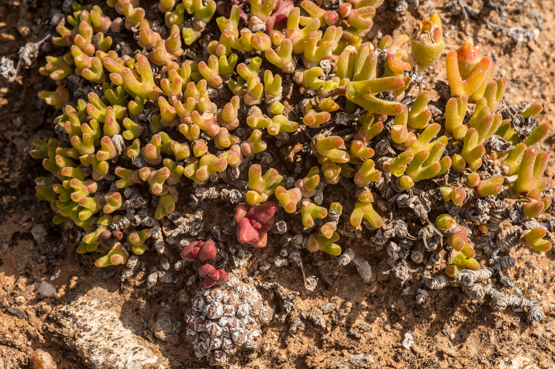
The flowering plants were photographed 11 July 2011
Adromischus filicaulis (part 1: ssp. filicaulis)
Crassula muscosa var. muscosa (2)
Crassula muscosa var. muscosa (1)
The great Linnaeus himself described this species way back in 1760. The adjective muscosus means moss-like, which is certainly an apt name for some of the many guises in which this species comes.
In var. muscosa the branches are usually 20-40 cm long (sometimes up to 80 cm) and upright, creeping or scrambling. An old synonym for it is Crassula lycopodioides, referring to Lycopodium or clubmoss. This variety is found from southern Namibia to South Africa’s South coast, but is especially widespread in Namaqualand and the Great Karoo and neighbouring areas. Even within this one variety (there are four in total) one comes across a great number of different forms. In the wild the leaves are generally greyish green to brown; in cultivation one also finds other colours.
The plants often grow in very dry spots. The same thin and densely leaved branches that make them look so delicate, seem to be rather effective in condensing dew and fog and channeling this moisture to their roots.
Pelargonium crithmifolium (3)
Pelargonium crithmifolium (2)
In the preceding post I mentioned the persisting inflorescences that are so characteristic of this species. When you look back at that post you will notice that even young plants produce them.
One cannot help but wonder what purpose these outgrowths serve apart from the obvious one: supporting the flowers and fruits (which could be done with a far less complicated and heavy structure). We have to bear in mind that these plants live in difficult circumstances and cannot afford unnecessary extravagances. In other words, there must be a proper return on investment and the best return would be one that helps the plants to survive.
To my mind, the persisting inflorescence has three functions:
— It keeps browsing predators away.
— It helps shade the plant and thereby lower the temperature.
— The intricate structure of branches diminishes the speed of the usually hot and desiccating wind.
It is interesting that these functions have their strongest influence at the place where they are most helpful: the growing tips of the stems, with their soft and tender young leaves.
More pictures to follow.
Pelargonium crithmifolium (1)
With its thick stems and a height of up to 1 meter, this species is one of the giants among the succulent Pelargoniums. Only P. carnosum is occasionally taller (up to 1.2 m). The species is characterized by its large, much branched inflorescences which become hard and spine-like and will persist for at least a year. The flowers appear from March to November.
The plants occur sporadically from southern Namibia to the western Great Karoo and the Little Karoo on dry, hot flats and slopes, often in crevices of rocky outcrops.
